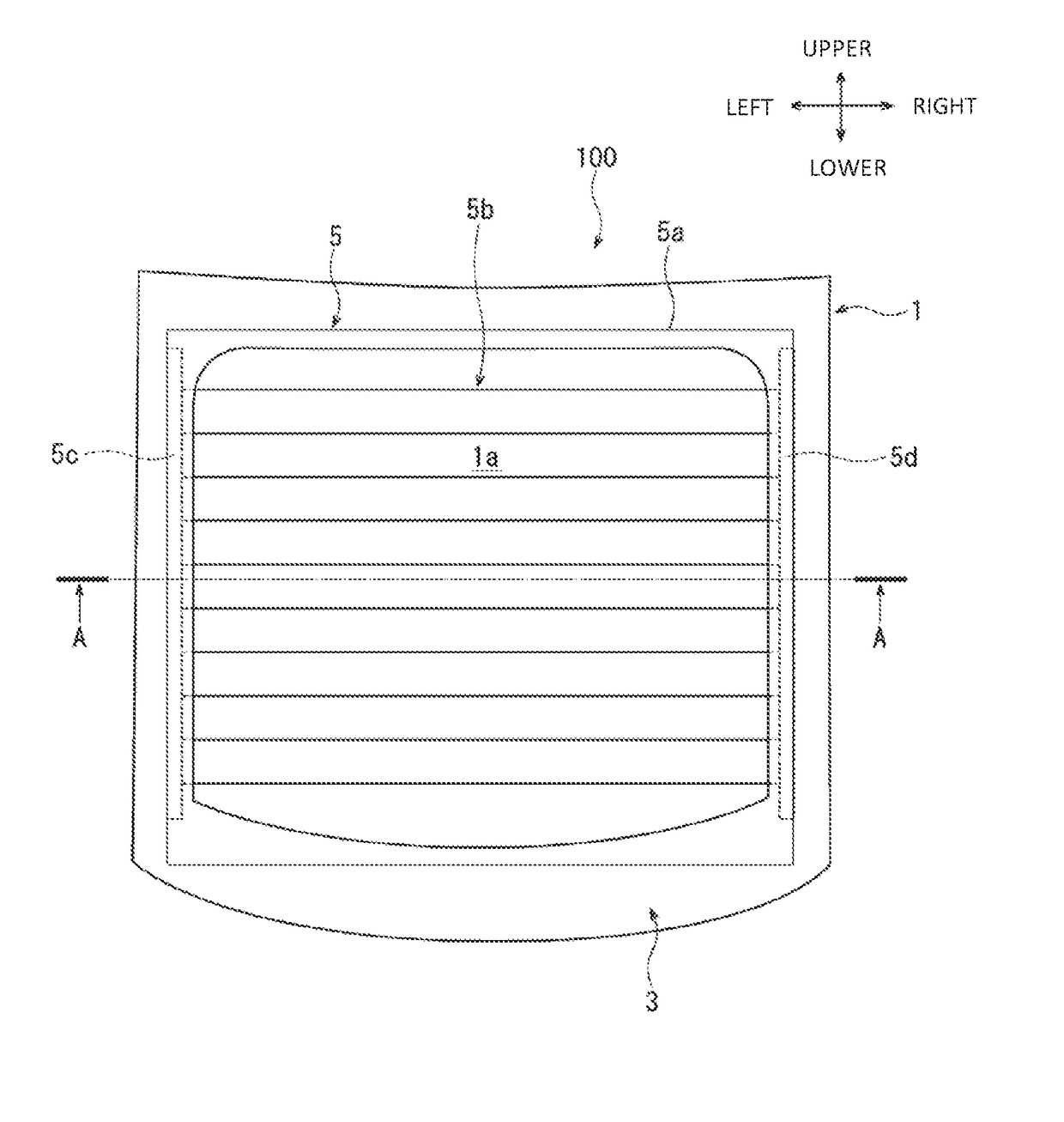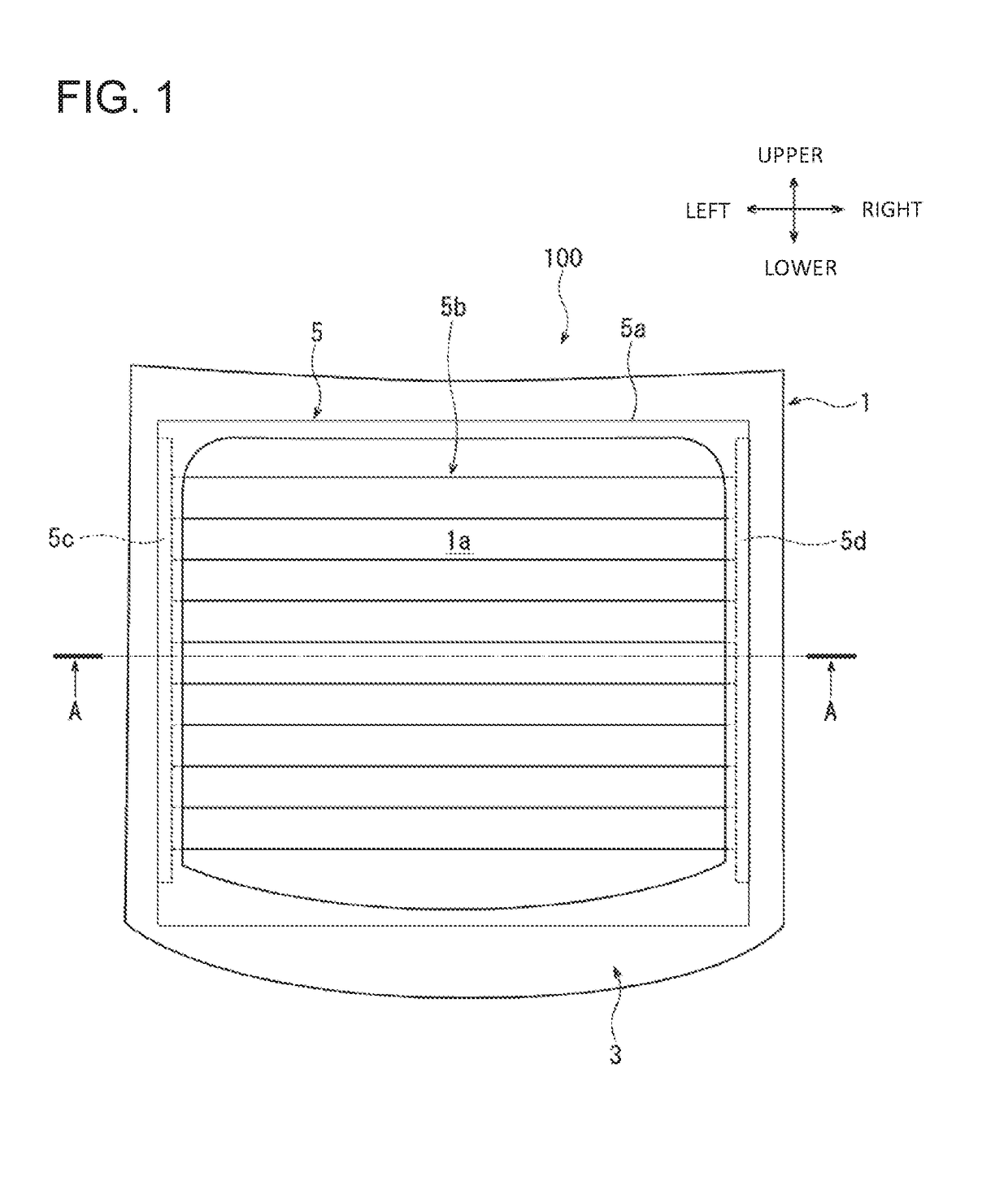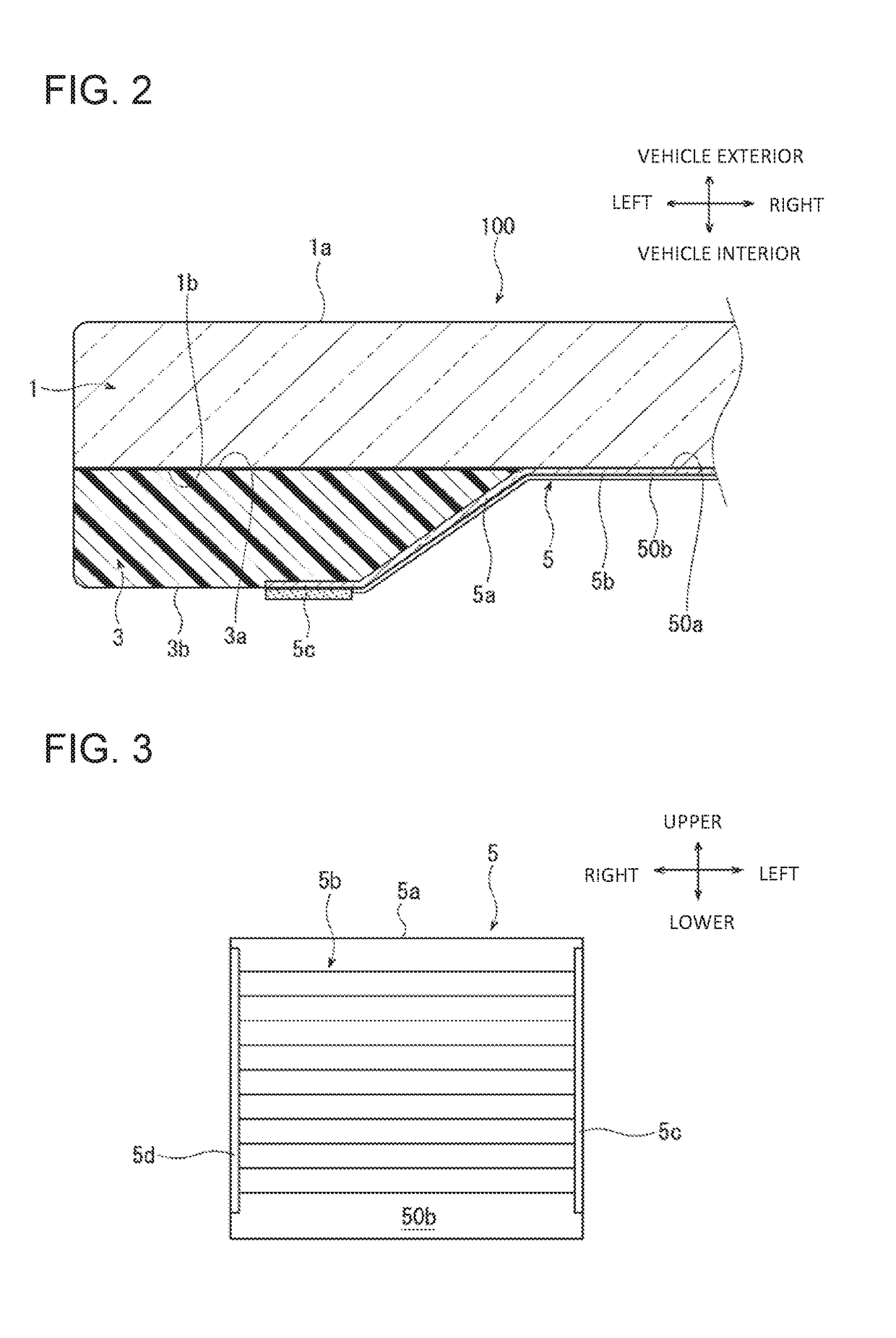Method for manufacturing plastic window and plastic window
- Summary
- Abstract
- Description
- Claims
- Application Information
AI Technical Summary
Benefits of technology
Problems solved by technology
Method used
Image
Examples
first embodiment
[0043]Referring to FIG. 1, a plastic window 100 according to the first embodiment includes a transparent body 1, a cover 3, and a functional film 5. The plastic window 100 is of a type that is mounted to a vehicle not shown. In the present embodiment, arrows shown in FIG. 1 denote the right, left, front, and rear directions of the plastic window 100, respectively. Left and right directions are perpendicular to front and rear directions. The same is true for the drawings having a similar directional notation. In FIGS. 2, 12, and 22, arrows with interior and exterior indicate the inside and outside of the vehicle, respectively, when the plastic window 100 or plastic windows 200, 300 which will be described later is mounted to a vehicle. These directions will be used for the sake of the description.
[0044]As shown in FIG. 2, the transparent body 1 is substantially of a rectangular flat plate shape and has on the opposite sides thereof a first surface 1a and a second surface 1b. The firs...
second embodiment
[0064]The following will describe a method for manufacturing a plastic window according to a second embodiment of the present invention with reference to FIGS. 9 and 10. The second embodiment differs from the first embodiment in that a functional film 51 shown in FIG. 9 is prepared instead of the functional film 5 used in the method according to the first embodiment. As with the functional film 5, the functional film 51 includes the base 5a and the conductive portion 5b formed on the back surface 50b of the base 5a. In the functional film 51, bus bar forming portions 5e, 5f are provided on the back surface 50b of the base 5a as shown by the imaginary line in FIG. 9. The bus bar forming portion 5e is located on the left side of the conductive portion 5b. The bus bar forming portion 5f is located on the right side of the conductive portion 5b. That is, in the film preparation step of the manufacturing method, the bus bars such as 5c and 5d are not formed on the functional film 51.
[006...
third embodiment
[0073]Referring to FIGS. 11 and 12, there is shown a plastic window 200 that is adapted to be mounted on a vehicle not shown and includes the transparent body 1 and the cover 3.
[0074]There is shown in FIGS. 13 and 14 a functional film 52 for the plastic window 200. As with the functional film 5 shown in FIG. 3, the functional film 52 includes the base 5a, the conductive portion 5b, and the bus bars 5c, 5d. The functional film 52 further includes colored portions 5g, 5h. As shown in FIG. 13, the conductive portion 5b and the bus bars 5c, 5d are formed on the back surface 50b of the base 5a. As shown in FIG. 14, the colored portions 5g, 5h are formed on the front surface 50a of the base 5a. The colored portions 5g, 5h are formed by providing black-colored opaque portions on the back surface 50b of the base 5a. The colored portion 5g is located at a position adjacent to the left end of the front surface 50a in an overlapping manner with the bus bar 5c and extends in the vertical direct...
PUM
| Property | Measurement | Unit |
|---|---|---|
| Electrical conductor | aaaaa | aaaaa |
| Transparency | aaaaa | aaaaa |
Abstract
Description
Claims
Application Information
 Login to view more
Login to view more - R&D Engineer
- R&D Manager
- IP Professional
- Industry Leading Data Capabilities
- Powerful AI technology
- Patent DNA Extraction
Browse by: Latest US Patents, China's latest patents, Technical Efficacy Thesaurus, Application Domain, Technology Topic.
© 2024 PatSnap. All rights reserved.Legal|Privacy policy|Modern Slavery Act Transparency Statement|Sitemap



